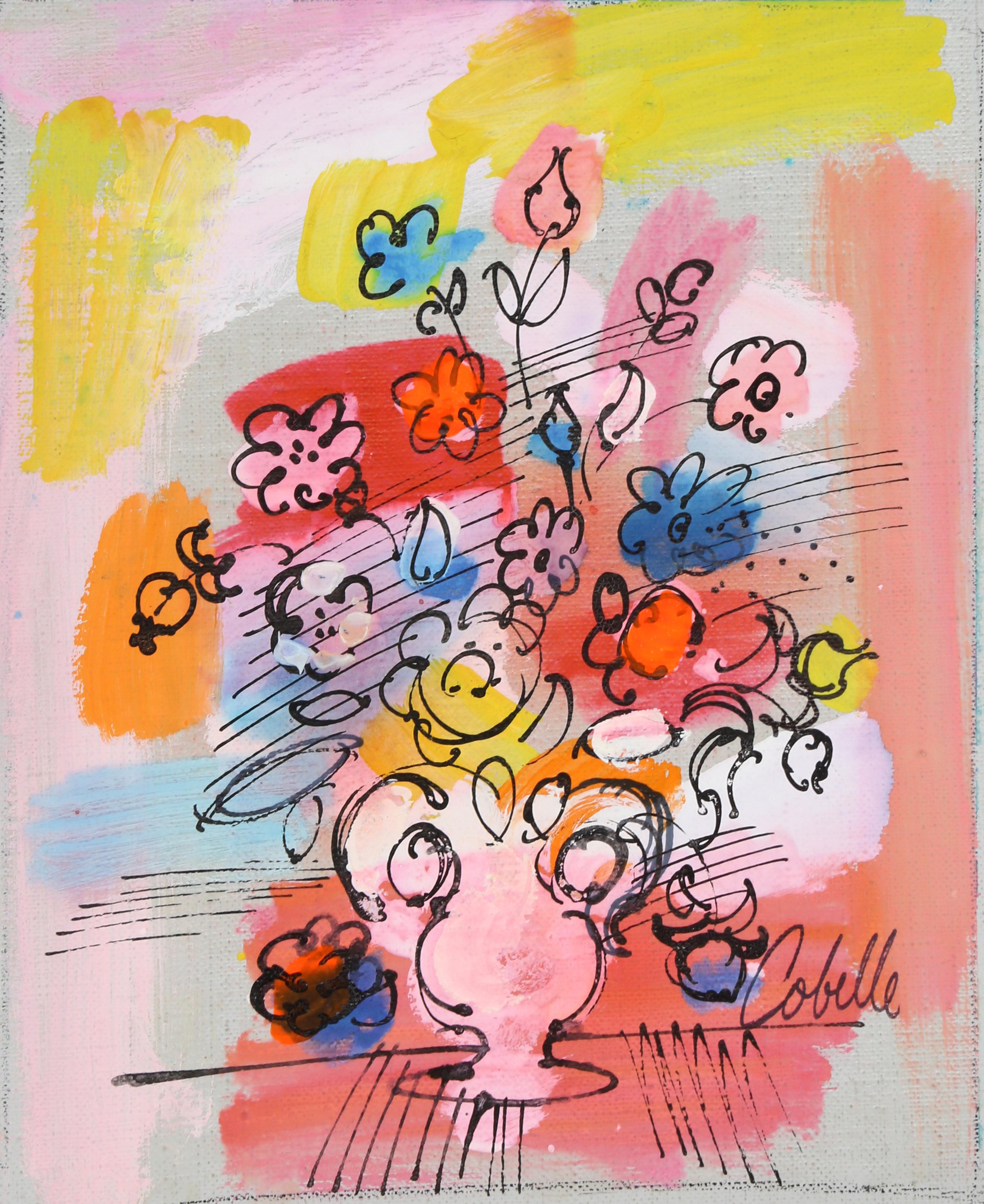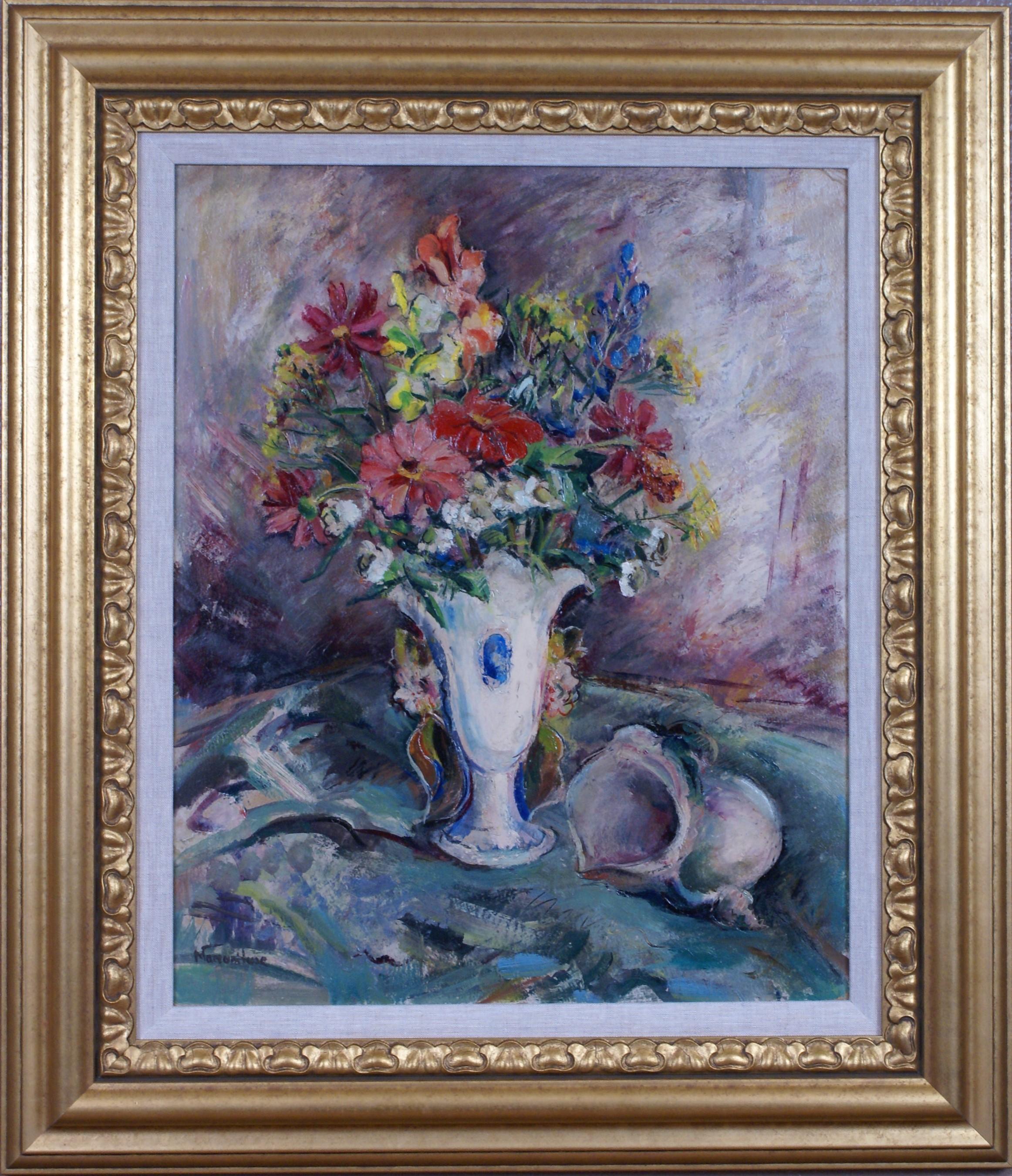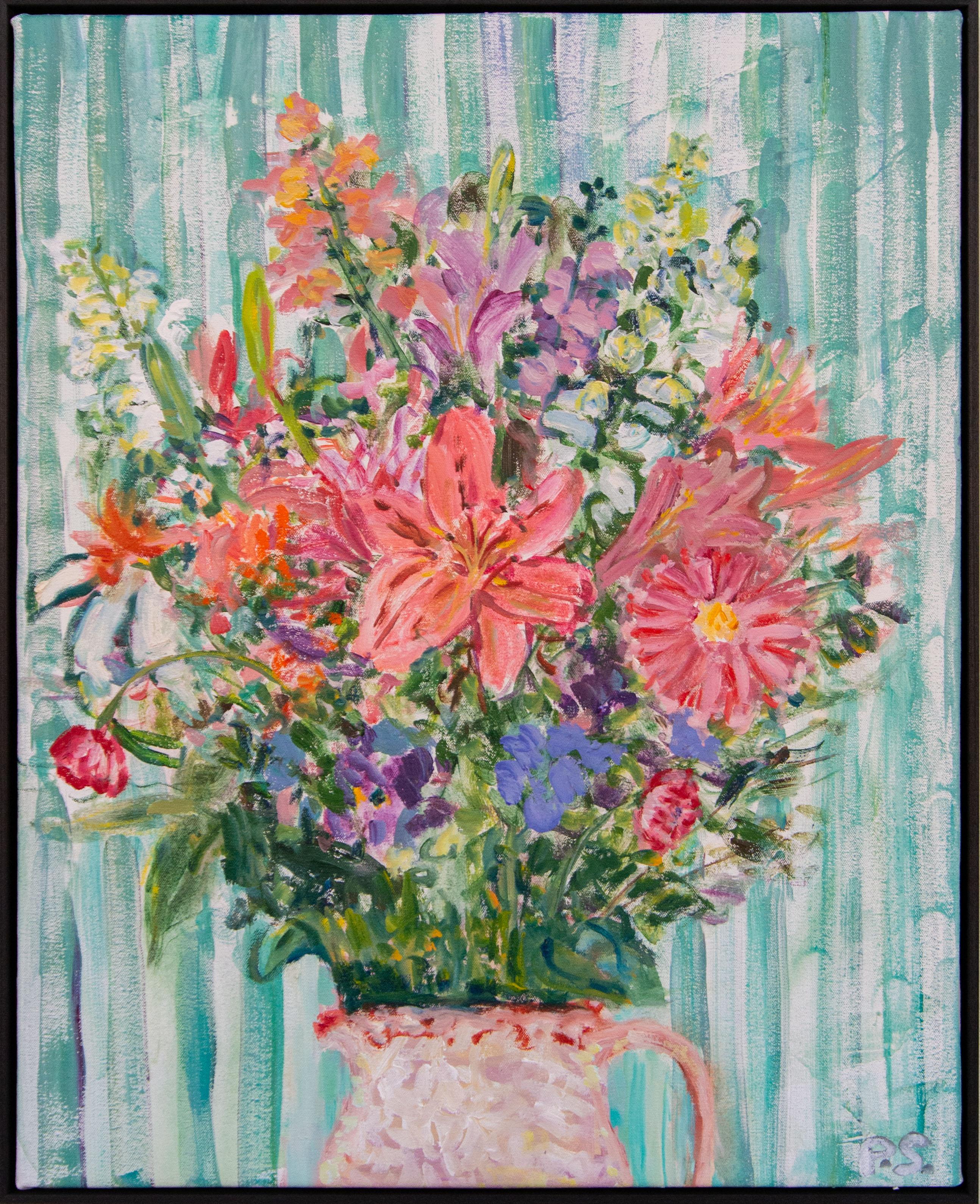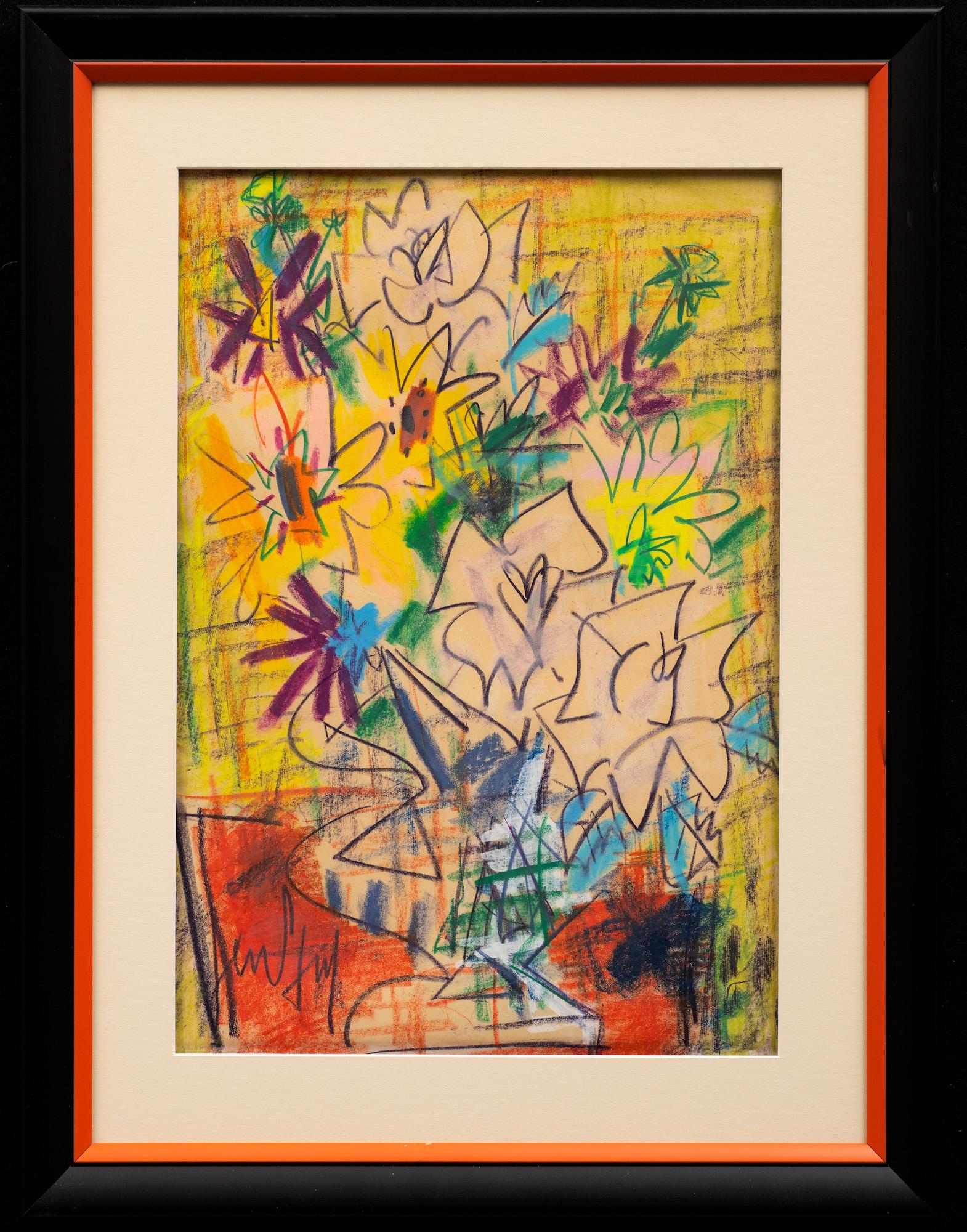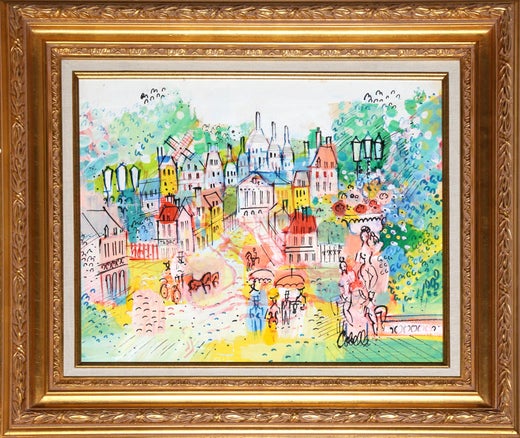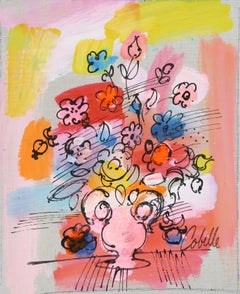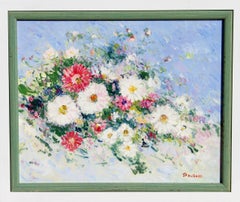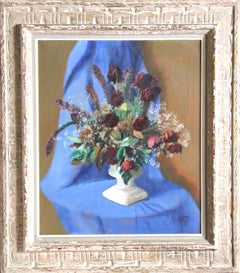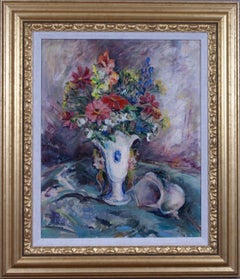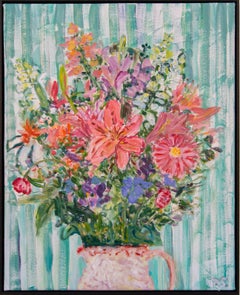Charles CobelleFleurs, Impressionist Painting by Charles Cobellecirca 1960
circa 1960
About the Item
- Creator:Charles Cobelle (1902 - 1994, French)
- Creation Year:circa 1960
- Dimensions:Height: 32 in (81.28 cm)Width: 38 in (96.52 cm)
- Medium:
- Movement & Style:
- Period:
- Condition:In very good condition. Vintage frame shows some wear.
- Gallery Location:Long Island City, NY
- Reference Number:Seller: RO802331stDibs: LU46613066962
Charles Cobelle
Charles Cobelle, whose birth name was Carl Edelman, began his career in Paris after earning Bachelor's and Master's degrees at the University of Munich. Later he studied at the Ecole Nationale Supérieure des Beaux-Arts in Paris and with Marc Chagall. At Menton on the Riviera, he apprenticed with Raoul Dufy. In the United States, where he lived in Brookfield and Fairfield, Connecticut, he continued to create mixed-media paintings and also did mural work for commercial establishments such as Neiman Marcus Company in Dallas, Texas, The Desert Inn in Las Vegas, Nevada and Teheran Restaurant in New York City. His work is in the collection of the Wadsworth Atheneum in Hartford, Mark Hopkins Hotel in San Francisco and the private collection of Howard Hughes.
- ShippingRetrieving quote...Shipping from: Long Island City, NY
- Return Policy
More From This Seller
View All1960s Fauvist Still-life Paintings
Canvas, Acrylic
1980s Impressionist Still-life Paintings
Oil
21st Century and Contemporary Impressionist Still-life Paintings
Oil
1940s American Modern Still-life Paintings
Oil
1980s Modern Still-life Paintings
Canvas, Oil
1970s Contemporary Paintings
Oil
You May Also Like
1940s Post-Impressionist Still-life Paintings
Oil
1970s Fauvist Still-life Paintings
Canvas, Oil
1990s Contemporary Still-life Paintings
Canvas, Oil, Acrylic
Late 20th Century Impressionist Figurative Paintings
Oil
1960s Expressionist Still-life Paintings
Paper, Oil Crayon
Mid-20th Century Post-Impressionist Still-life Paintings
Oil
Read More
Romare Bearden’s Humanity Infuses His Bright, Bold Art
Through collage, painting and printmaking, the artist foregrounded Black life in America in revolutionary new ways.
Chryssa’s 1962 Neon Sculpture Was Way ahead of the Art-World Curve
By working with lettering, neon and Pop imagery, Chryssa pioneered several postmodern themes at a time when most male artists detested commercial mediums.
